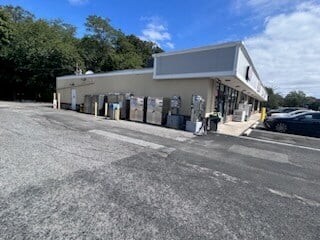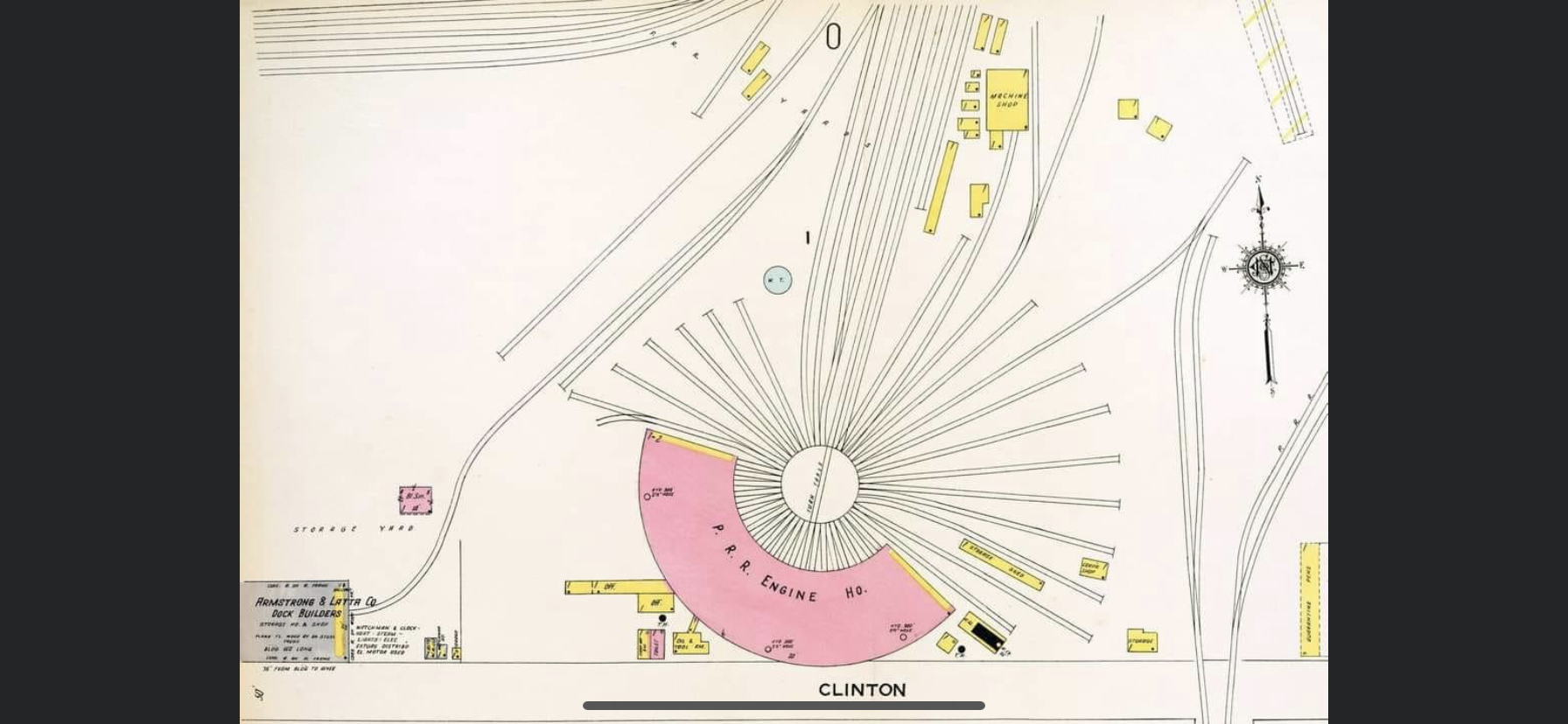It is not illegal to sell a contaminated property, but it sure can be difficult. The primary difficulty is contamination which devalues real estate and who is responsible for the cleanup.

Determining a cost to clean up the property has to be part of the valuation of the property for purchase. Let's say for argument's sake you have a $1,000,000 property, with $200,000 in anticipated cleanup costs. I will not bother dealing with what you pay for this property, but it is common that not only the $200,000 is deducted from the sale price but an additional amount is deducted for the headache and management of this future cleanup if cleanup is transferred to the new owner. In this scenario, buyers take the risk that the $200,000 is fixed, which is not always the case as costs rise and regulations charge (becoming more stringent)., which also increases cost.
That is a very simple scenario of selling or buying a contaminated property. Unfortunately, environmental regulations add another layer of complexity. If you own a contaminated property, you are the Responsible Party (RP) and Person Responsible for Conducting Remediation (PRCR).
Clearly, you should discuss this type of sale with your attorney, with the major consideration being Who is Responsible for the cleanup and how is that responsibility maintained? For this example, we will assume that the buyer will be taking the role of PRCR as defined below.
A Responsible Party is a party that has an affirmative obligation to remediate, as defined by the Brownfield and Contaminated Sites Act, N.J.S.A. 58:10B-1.3, as stated below:
“An owner or operator of an industrial establishment subject to the provisions of P.L.1983, c.330 (C.13:1K-6 et al.), the discharger of a hazardous substance or a person in any way responsible for a hazardous substance pursuant to the provisions of subsection c. of section 8 of P.L.1976, c.141 (C.58:10-23.11g), or the owner or operator of an underground storage tank regulated pursuant to the provisions of P.L.1986, c.102 (C.58:10A-21 et seq.), that has discharged a hazardous substance, shall remediate the discharge of a hazardous substance.”
A Person Responsible for Conducting the Remediation includes all parties who are conducting remediation, regardless of their status as a Responsible Party. A Person Responsible for Conducting the Remediation is defined by SRRA, N.J.S.A. 58:10C-2, as stated below:
"Person responsible for conducting the remediation" means (1) any person who executes or is otherwise subject to an oversight document to remediate a contaminated site, (2) the owner or operator of an industrial establishment subject toP.L.1983, c.330 (C.13:1K-6 et al.), for the remediation of a discharge, (3) the owner or operator of an underground storage tank subject to P.L.1986, c.102 (C.58:10A-21et seq.), for the remediation of a discharge, (4) any other person who discharges a hazardous substance or is in any way responsible for a hazardous substance, pursuant to section 8 of P.L.1976, c.141 (C.58:10-23.11g), that was discharged at a contaminated site, or (5) any other person who is remediating a site.”
The seller is and always will be the Responsible Party for the site and until real estate is transferred they are also the PRCR. The new buyer can assume the mantle of PRCR and continue the remediation of the site. If the buyer assumes the PRCR and then fails to meet their obligations and the DEP gets no response from them, the seller (former owner) will be contacted by the DEP as the original RP to continue with the remediation.
In English, the seller holds responsibility for life. If the buyer fails to clean up the site, the seller will be on the hook. Attorneys can protect a seller with language in the agreement of sale transferring RP/PRCR roles.
There is a form that is submitted to DEP adding the new property owner as the PRCR if that is the agreement. The legal wording must have a foundation of what the new buyers and sellers’ responsibilities will be regarding the future environmental work at the site.
An alternative to transferring the responsibility of the cleanup is for the seller to maintain responsibility and positive control of the cleanup after the sale. Defining cleanup is also very important. For example, many contaminated sites never get 100% cleaned up by removing or remediating the contamination, rather the contamination is permitted in place. Clean is not clean, but rather legal contamination. If your agreement of sale sells you will promise a clean site, define clean.
It sounds complex and confusing. There can be many variables involved, call a professional.
888-301-1050







 doesn't state that the home is on oil heat but does state "No vent pipes, fill pipes or fuel distribution lines were found during the inspection."
doesn't state that the home is on oil heat but does state "No vent pipes, fill pipes or fuel distribution lines were found during the inspection." 




 is not an environmental consultant, saw damaged paint and flagged a lead hazard. The photo to the left is deteriorated paint.
is not an environmental consultant, saw damaged paint and flagged a lead hazard. The photo to the left is deteriorated paint.








 Not shocking, things get old, what is shocking, and mostly to your bank account, is the cost of cleaning up an oil tank leak. Ever paint and spill paint? You have to clean the paint before it dries or it is too hard to clean up, just as with a stain on your clothes. Think of that with an oil tank leak. When an oil tank leaks it tends to leak until there is no more liquid left in the tank. A hole in the bottom of the tank can keep leaking, while slow, it can keep leaking forever. If there is a hole in the top of the oil tank, either cut out to fill the oil tank or a hole from rust, this will allow the rain or water to fill the hole and the liquid from the oil tank to spill over the top of the oil tank and run down the sides.
Not shocking, things get old, what is shocking, and mostly to your bank account, is the cost of cleaning up an oil tank leak. Ever paint and spill paint? You have to clean the paint before it dries or it is too hard to clean up, just as with a stain on your clothes. Think of that with an oil tank leak. When an oil tank leaks it tends to leak until there is no more liquid left in the tank. A hole in the bottom of the tank can keep leaking, while slow, it can keep leaking forever. If there is a hole in the top of the oil tank, either cut out to fill the oil tank or a hole from rust, this will allow the rain or water to fill the hole and the liquid from the oil tank to spill over the top of the oil tank and run down the sides. Visualize this, go to your refrigerator pop a pin in a container of milk or orange juice, and walk away. Come back and you got a big mess. So when oil leaks you have to excavate soils that have oil impact, gravity pulls the oil down, many times deeper than the foundation of the dwelling requiring structural supports of the dwelling foundation to allow the excavation to be safely advanced DEEPER than the existing foundation. If it sounds like I am speaking a foreign language, understand this to structurally support a foundation, you need engineering plans, permits, and typical helical piers to support the foundation. Typical costs? $11,000 to $20,000.00 on average. That doesn't include soil excavation, disposal, testing, etc., that is just to dig safely.
Visualize this, go to your refrigerator pop a pin in a container of milk or orange juice, and walk away. Come back and you got a big mess. So when oil leaks you have to excavate soils that have oil impact, gravity pulls the oil down, many times deeper than the foundation of the dwelling requiring structural supports of the dwelling foundation to allow the excavation to be safely advanced DEEPER than the existing foundation. If it sounds like I am speaking a foreign language, understand this to structurally support a foundation, you need engineering plans, permits, and typical helical piers to support the foundation. Typical costs? $11,000 to $20,000.00 on average. That doesn't include soil excavation, disposal, testing, etc., that is just to dig safely.




